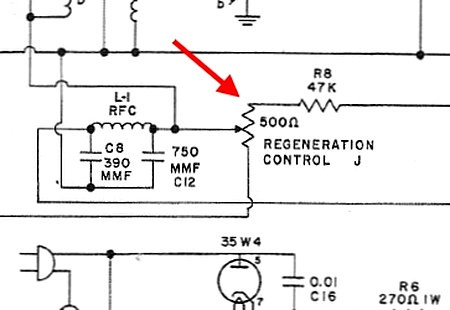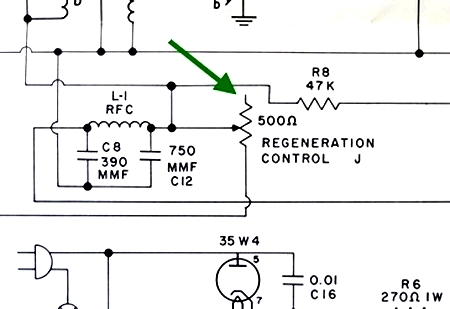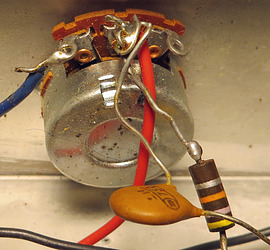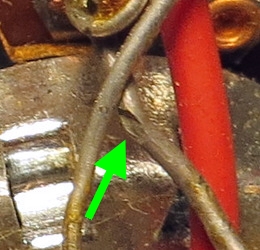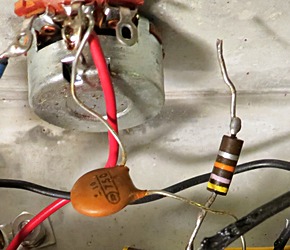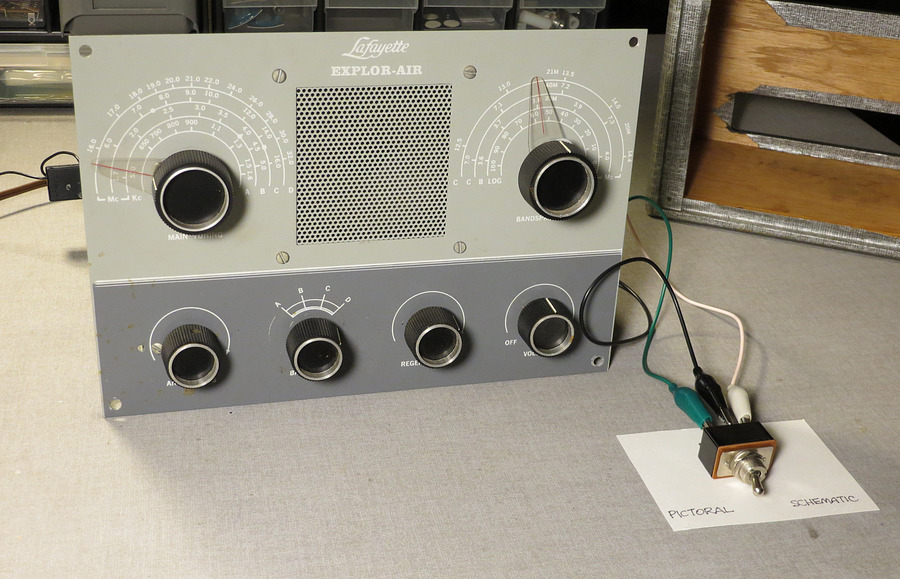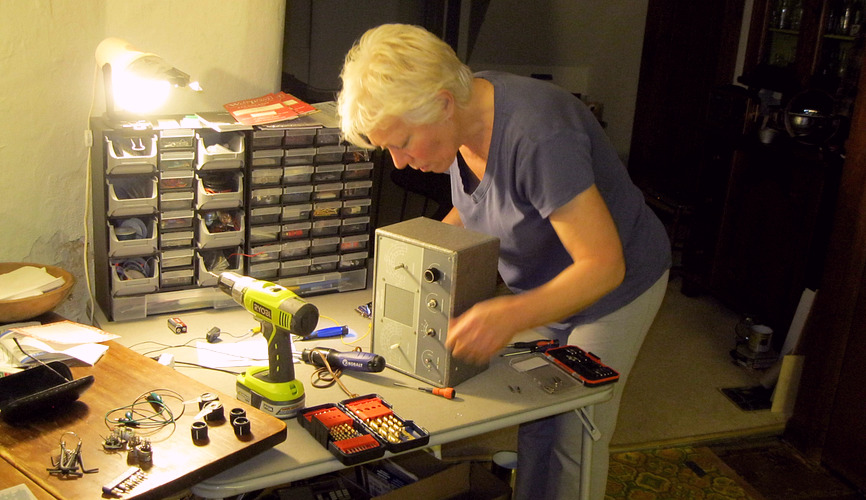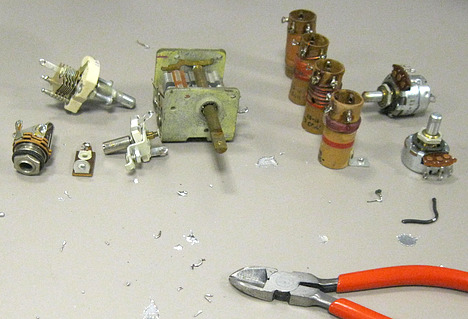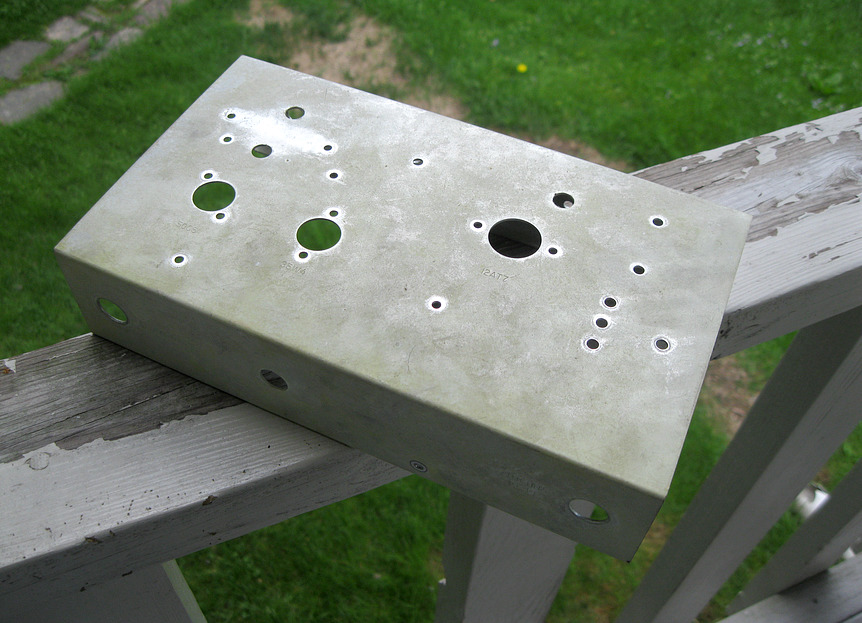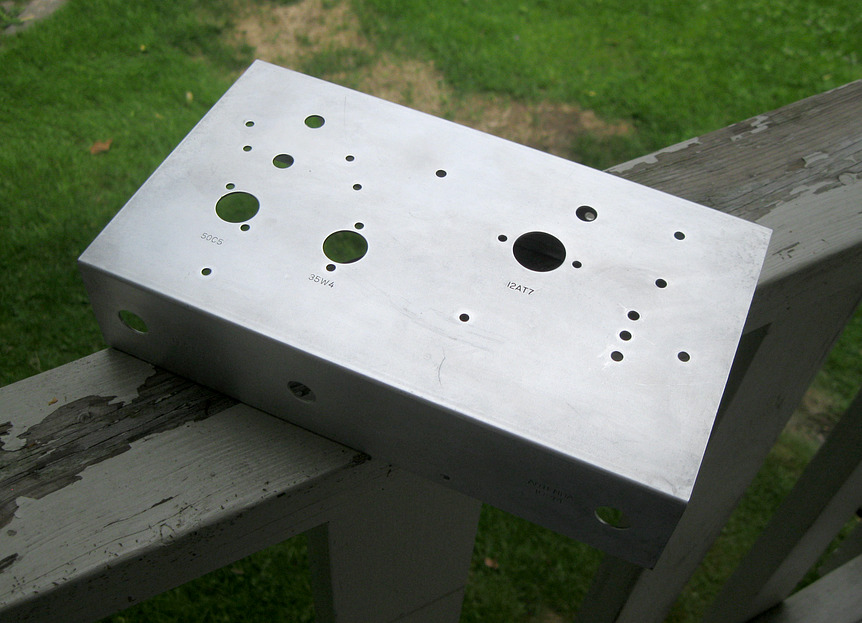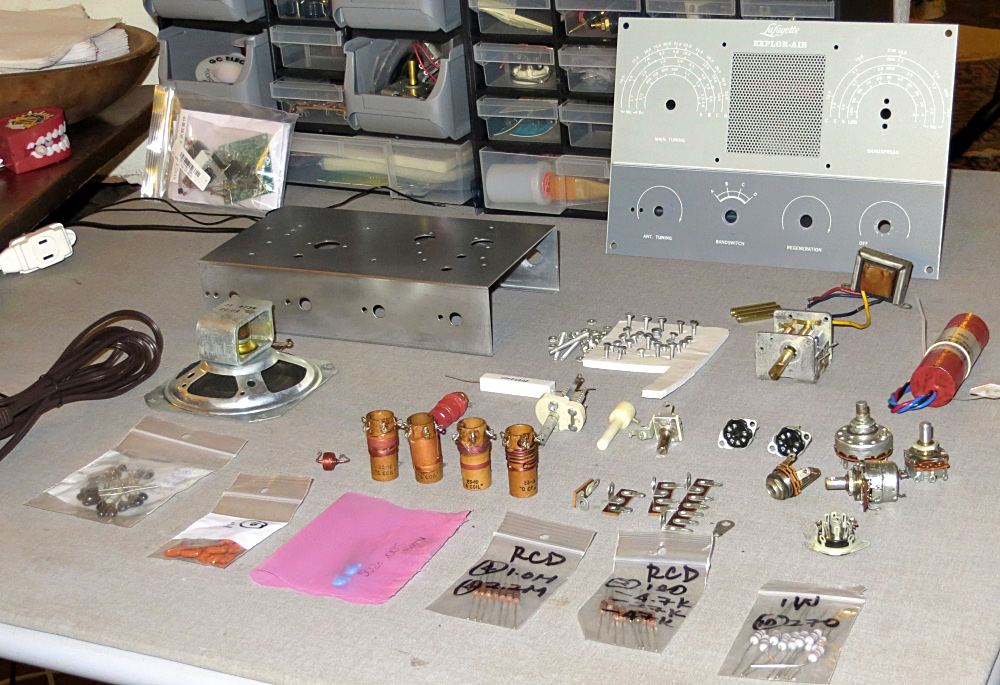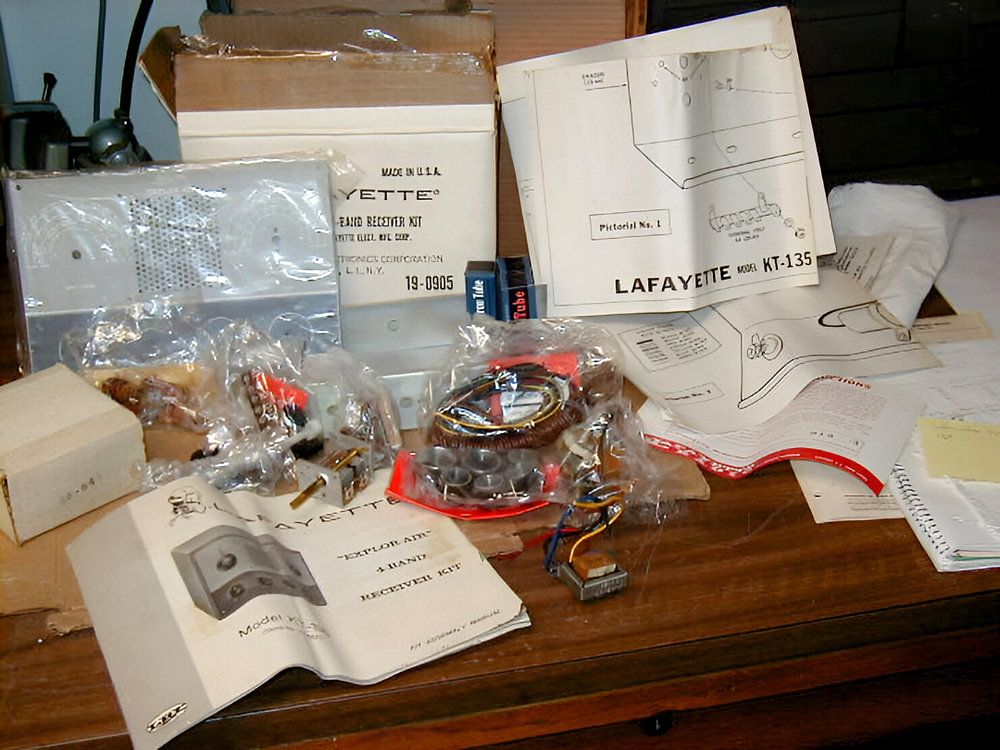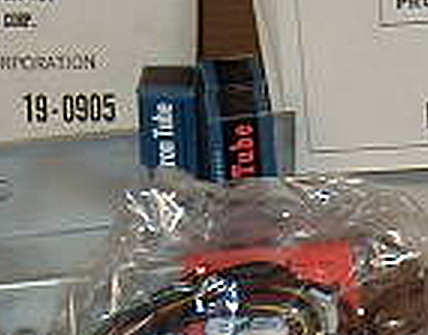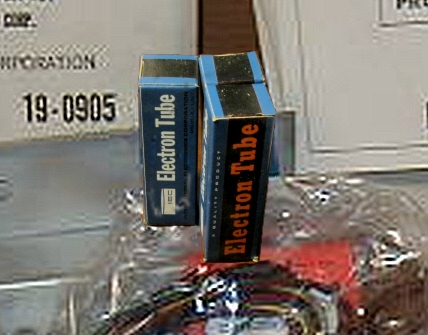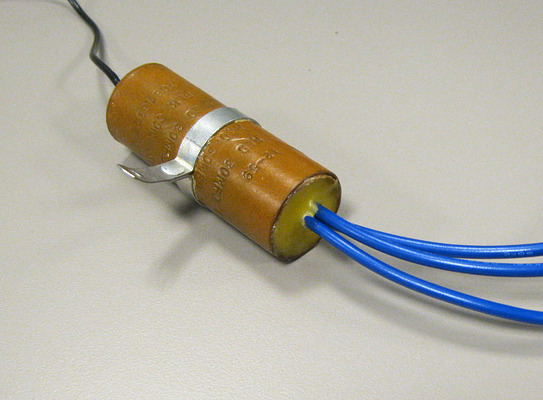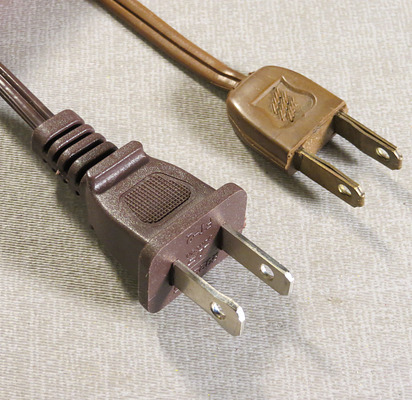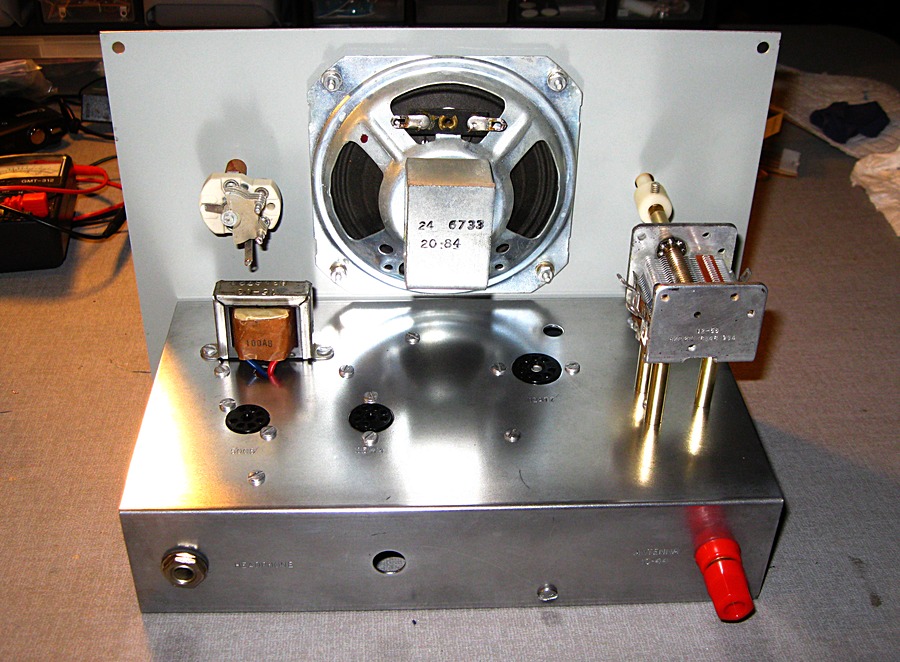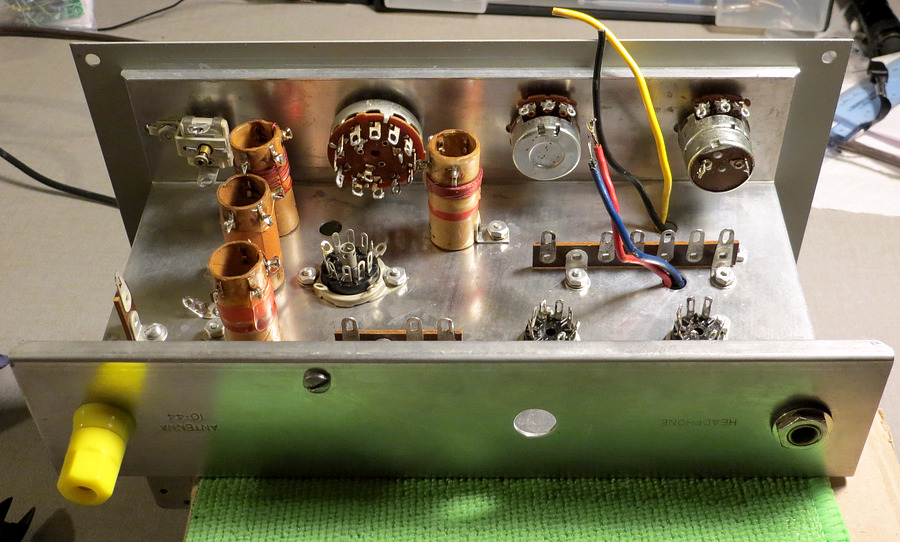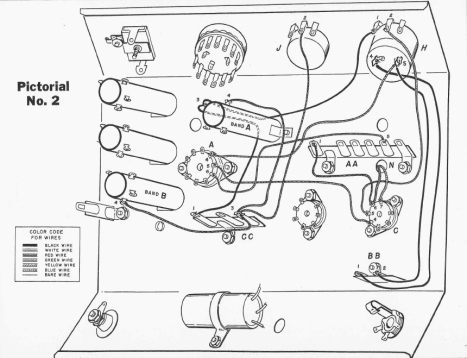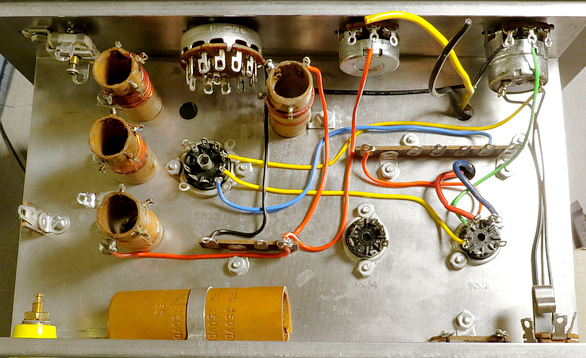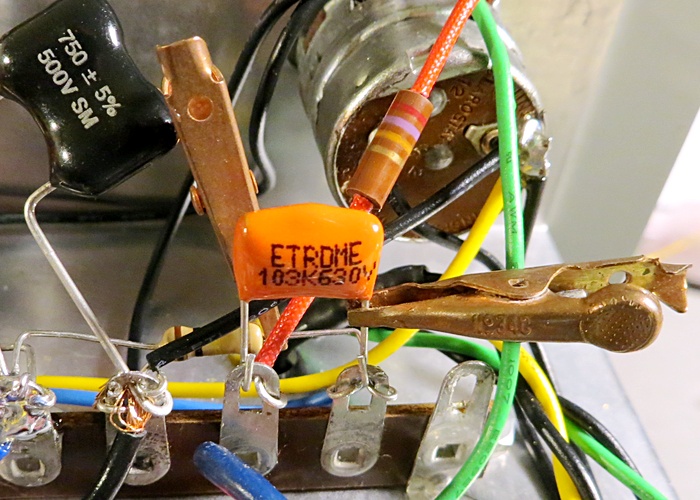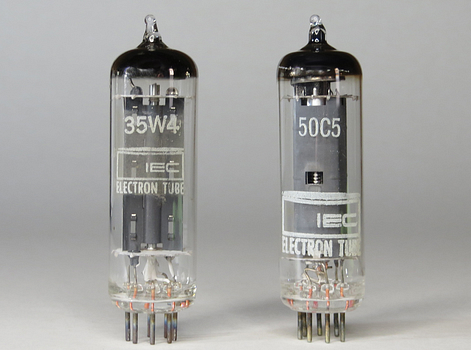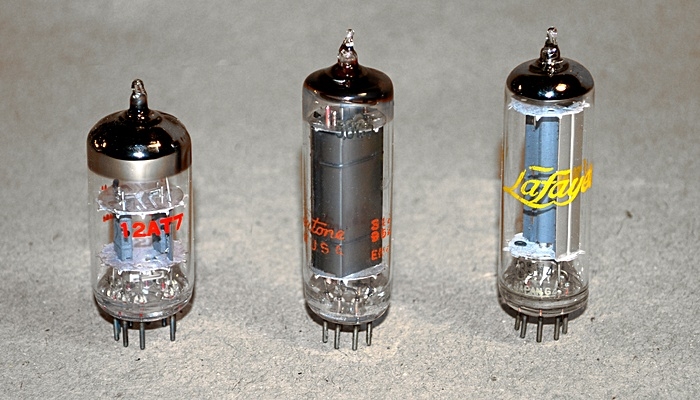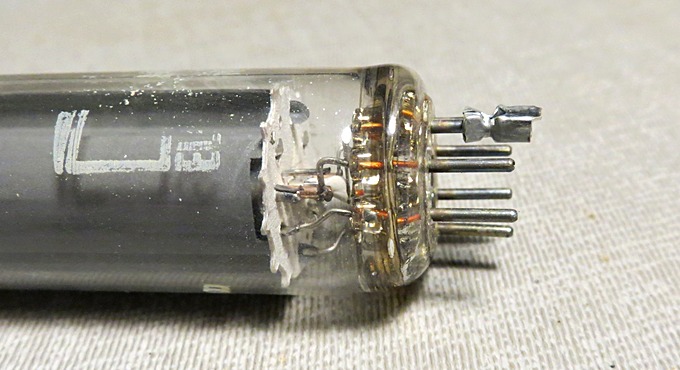 |
Lafayette KT-135 EXPLOR-AIR radio
kit |
 |
|
|
|
|
|
|
Since the radio is working, let's
perform an experiment! |
|
|
|
The schematic in the manual shows the
regen control wired this way. |
The pictorial instruction sheet says to wire it like this. |
|
|
|
|
|
| Which way works better? We
need to cut the lead to the resistor at the regen control,
then compare how the radio operates with it connected to the
right hand lug vs. the center lug. When I touched the
resistor it
broke at the arrow! That actually made things easier.
|
|
|
|
|
|
Now we have the black alligator clip
on the resistor, the green clip on the center terminal of
the regen control and the white clip on the right hand
terminal. I had fantasies of flipping the
switch and observing a fantastic increase in performance. In
reality, all that happened was that the regeneration control
needed a tiny adjustment as you switched back and forth.
NOTE: The schematic in
the manual is incorrect. There is no connection on one side
of the regen control.
|
|
|
|
|
|
|
Experiment over. Let's take this thing
apart! |
|
|
| Right from the start there were
problems. I couldn't get the frickin' knobs off! Two of them
had broken set screws. One of them (the one pictured still
attached) didn't
seem to have a set screw with a head on it, so I started to
drill it out. Andrea came to take a look. There was NO set
screw. The knob was GLUED on. What a mean trick! I had been
drilling into the shaft of the volume control. That dirty
bum! (As Ralph Kramden would say.) |
|
|
|
|
|
|
|
|
|
|
|
The greenish coating on the chassis
is oxidized cadmium. I was advised not to sand it or breathe
the dust, so I used Duro "TUB N' SINK JELLY" which is
normally used to remove calcium and rust. I then polished it
five times with Brasso. I wanted it to remain dull, but it
kept getting shinier and shinier. The more I polished it,
the shinier it got. There must be a connection, but it
escapes me entirely.
|
|
|
|
|
|
|
|
| The collected parts. The fixed
capacitors will be replaced with silver-mica types for
improved stability, except for the .01 bypass caps which are
"Orange Drops." The "Chatter Teeth" (top left) are
not part of the project. |
|
|
|
|
|
|
This is what you got when you opened the box 50
years ago. I stole this picture from
|
virhistory.com. |
|
|
|
|
|
Using the photo on the left I've identified
the tubes in this particular kit as "IEC" by the boxes. The tube boxes were
magically restored in the picture on the right.
|
|
|
|
|
|
|
|
| The original capacitor was restuffed
and sealed with beeswax at each end (I didn't have any red
wire). The set was also going to get a
polarized plug since there was a 50/50 chance the chassis
would be "hot" every time you plugged it in. |
|
|
|
|
|
|
|
Main parts are mounted. Notice the red
antenna connector. |
|
|
|
|
| The
antenna connector, which was black, was replaced with a red
one. Someone pointed out that neither color should be used
for an antenna and convinced me to get a yellow one. This
style is getting hard to find. |
|
|
|
|
|
| How it looks in the manual vs. how
it looks in real life. Pictorial No. 2 makes you think it
will be easy to wire the set. Then you get to Pictorial No.
5 and things aren't so easy anymore. (A copy of the manual is on the
bottom of page five.) |
|
|
|
|
|
|
Small
alligator clips were used as heat sinks to prevent damage from the soldering iron. |
|
|
|
The vacuum tubes. |
|
|
|
|
Inside your KT-135 you'll likely find an IEC
35W4, an IEC 50C5, both made in Japan, and an IEC 12AT7 made
in Great Britain. IEC, or International Electronic
Components, rebranded vacuum tubes at a factory in Long
Island, NY. You may also find Sylvania or Lafayette brand
tubes.
In 1965 Lafayette sold GE, RCA, Mullard and
Sylvania brand tubes. In 1966 the Sylvania brand was
replaced with Lafayette, so that can help narrow down the
date of the radio. The Lafayette 35W4 and 50C5 were
rebranded Sylvania
tubes, but the 12AT7 was made by Mullard,
contrary to their "Made In USA" claim in the
catalog.
Sometimes it's obvious the original
tubes have been replaced, especially if the radio was sold
online. The tubes were scavenged from the KT-135s in the
1960s and '70s to be used in the family table radio, then
replaced by a seller 50 years later. For example, Lafayette
didn't supply tubes labeled Sears Silvertone or
Motorola with the KT-135 kit, so these were pulled from
another radio, as were tubes labeled Admiral, Emerson, or
Philco. The original 12AT7 will sometimes be in place
because they weren't used in superheterodyne radios.
In the 1966
Lafayette catalog, a Lafayette 35W4 was $0.48 and a 50C5 went
for $0.90. A 12AT7 was $1.29. They didn't sell the IEC brand
tubes, even though you got three with the KT-135.
IEC went bankrupt in 1980,
long after the KT-135 kit was out of production.
|
|
|
|
|
|
|
| When this radio was being restored I
was unable to acquire IEC brand tubes. Three "New Old Stock"
vacuum tubes were purchased, and one of them was a Lafayette
just by chance. I got them at
vivatubes.com. |
| |
|
|
|
|
|
|
|
|
Above is one of the tubes after it was removed from its
socket. Part of the socket is still attached to the tube.
Obviously the radio isn't going to work again when the tube
is put back. The Lafayette tubes had a 2-year guarantee
(the IEC had none) but they supplied low quality
phenolic plastic tube bases with the KT-135, which sold in the
catalog
for 18 cents.
It's doubtful anybody ever did this, but you could go into
the Lafayette store and upgrade to a Bakelite socket for 31
cents. Whaaaat??! 31 cents?! That's almost double the price, those
thieves!!! |
|
|
|
|
|
|
|
|
|
|
|


